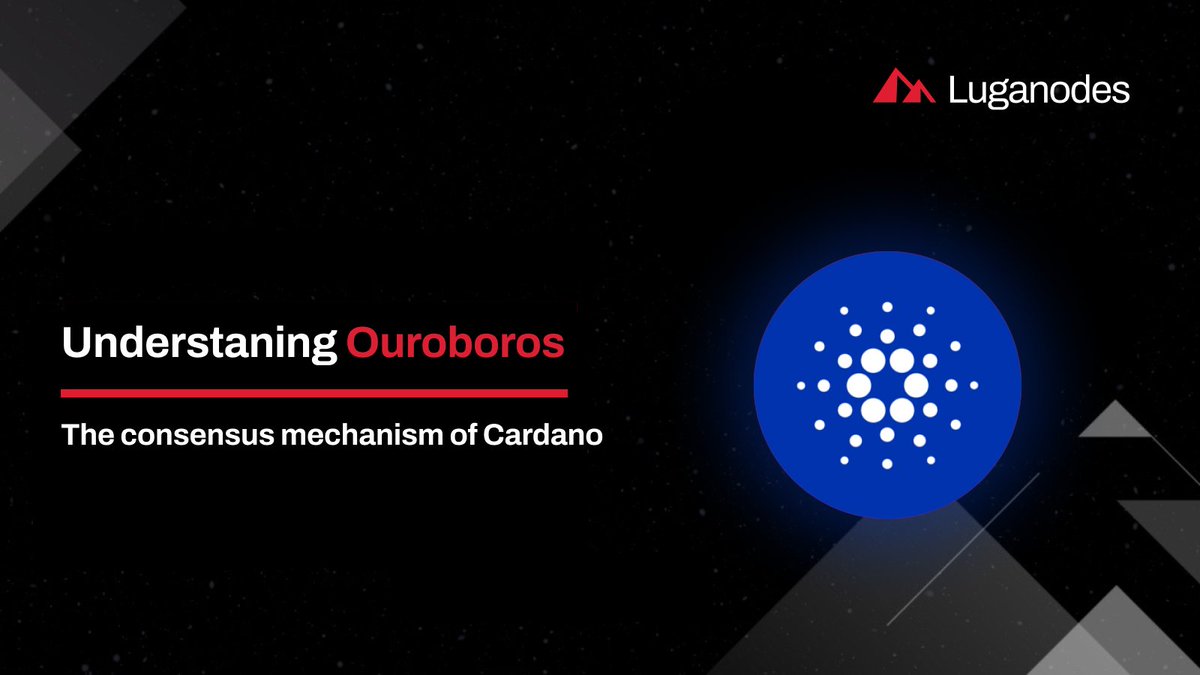
1/
The @NEARProtocol's unique architecture & it's phased upgrades are designed to enhance:
📈Scalability
🔐Security
🌐Decentralization
As the network continues to evolve, it will become more efficient & better equipped to handle the growing demands of #Dapps
🧵👇
The @NEARProtocol's unique architecture & it's phased upgrades are designed to enhance:
📈Scalability
🔐Security
🌐Decentralization
As the network continues to evolve, it will become more efficient & better equipped to handle the growing demands of #Dapps
🧵👇

2/
#NEAR uses a Thresholded Proof of Stake (PoS) consensus algorithm to execute transactions 📝
The network algorithmically sets a minimum validator participation threshold, where validators bid for participation👨💻️
#NEAR uses a Thresholded Proof of Stake (PoS) consensus algorithm to execute transactions 📝
The network algorithmically sets a minimum validator participation threshold, where validators bid for participation👨💻️
3/
The sharding model used by #NEAR is called Nightshade, which is powerful but also complex 🛠️
One aspect that requires attention is the fork choice rule, which needs to be executed separately for each chain (shard chains and beacon chain) 🔗
The sharding model used by #NEAR is called Nightshade, which is powerful but also complex 🛠️
One aspect that requires attention is the fork choice rule, which needs to be executed separately for each chain (shard chains and beacon chain) 🔗

4/
One of the complexities is the fork choice rule, which needs to be executed separately for each chain, the shard chains, and the beacon chain, and it must be built differently and tested separately 👨💻️
Credits: @NEARProtocol
One of the complexities is the fork choice rule, which needs to be executed separately for each chain, the shard chains, and the beacon chain, and it must be built differently and tested separately 👨💻️
Credits: @NEARProtocol

5/
Nightshade models the system as a single blockchain, where each block contains all transactions for all shards and changes the whole state of all shards.
However, physically, no participant downloads the full state or the full logical block ⬜️
Nightshade models the system as a single blockchain, where each block contains all transactions for all shards and changes the whole state of all shards.
However, physically, no participant downloads the full state or the full logical block ⬜️
6/
Instead, each participant only maintains the state of the shards they validate transactions for, and the transactions are split into physical chunks, one chunk per shard.
Under ideal conditions, each block contains exactly one chunk per shard per block
Instead, each participant only maintains the state of the shards they validate transactions for, and the transactions are split into physical chunks, one chunk per shard.
Under ideal conditions, each block contains exactly one chunk per shard per block
7/
Nightshade is implemented in four phases.
Phase 0 launched in Q4 2021 split the network into four data shards. Validators were required to store the state of their assigned shard but still had to validate transactions from all shards✅
Nightshade is implemented in four phases.
Phase 0 launched in Q4 2021 split the network into four data shards. Validators were required to store the state of their assigned shard but still had to validate transactions from all shards✅
8/
Phase 1 went live on mainnet in September, introducing a new role called "chunk-only producers" who only validate a single shard, lowering their hardware requirements and growing the network in a decentralized manner📈
Phase 1 went live on mainnet in September, introducing a new role called "chunk-only producers" who only validate a single shard, lowering their hardware requirements and growing the network in a decentralized manner📈
9/
#NEAR has a strong staking community, as of Q3, 483 mn $NEAR tokens were staked, which represents 60% of the circulating supply.
The network had 118 validators & a Nakamoto Coefficient of nine, which shows that the network is becoming increasingly decentralized over time 🌐
#NEAR has a strong staking community, as of Q3, 483 mn $NEAR tokens were staked, which represents 60% of the circulating supply.
The network had 118 validators & a Nakamoto Coefficient of nine, which shows that the network is becoming increasingly decentralized over time 🌐
10/
We recently did a detailed report breaking down all the different aspects of this "Highly scalable and low transaction fees L1 Blockchain" 👇
medium.com/@luganodes/an-…
We recently did a detailed report breaking down all the different aspects of this "Highly scalable and low transaction fees L1 Blockchain" 👇
medium.com/@luganodes/an-…

11/
Luganodes takes pride in being one of the leading validators on #NEARProtocol 💪
#Stake your $NEAR with us & earn passively💰
To make the #staking process smooth & simple, we've prepared a quick guide for our community 👇
luganodes.medium.com/near-how-to-st…
#Near #web3 #blockchain
Luganodes takes pride in being one of the leading validators on #NEARProtocol 💪
#Stake your $NEAR with us & earn passively💰
To make the #staking process smooth & simple, we've prepared a quick guide for our community 👇
luganodes.medium.com/near-how-to-st…
#Near #web3 #blockchain

• • •
Missing some Tweet in this thread? You can try to
force a refresh





